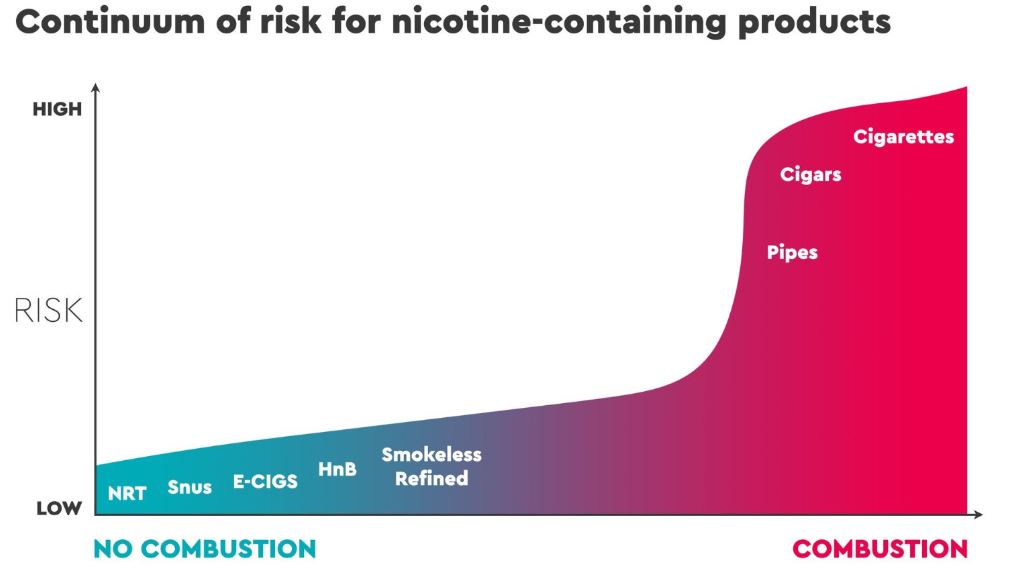The concept of harm reduction is well-established in science and public health. It is built on the understanding that people will seek pleasure and engage in risky behaviour to experience it.
Condoms lower the risk of infection and unwanted pregnancy while methadone allows opiate addicts to consume a drug that minimises heroin withdrawal symptoms, taking the risks of needles and the black market out of the equation.
However, tobacco harm reduction remains something of a taboo concept, thanks, in no small part, to the World Health Organization’s (WHO) refusal to engage with the ‘tobacco industry.’ This includes small, independent vape businesses that do not promote tobacco in any form.
In a guidance article issue in February 2020, the organisation wrote:
“Nicotine is highly addictive and found in most e-cigarettes. Both tobacco products and e-cigarettes pose risks to health and the safest approach is not to consume either.”
However, Nicotine sources exist on what the 2020 Global State of Tobacco Harm Reduction report calls the ‘Continuum of Risk’. By considering the risks and potential benefits of different nicotine sources, consumers can make an informed decision about which could be the best one for them.

Cigarettes
Cigarettes are by far the most harmful widely-available nicotine source, accounting for 78,000 UK deaths each year, according to NHS statistics. Cigarette-smoking causes cancer, heart disease, chronic obstructive Pulmonary Disease (COPD), lung disease and diabetes.
Cigarette smoke also presents a significant risk to others, particularly children. People who regularly breathe in others’ smoke are much more likely than non-smokers to develop the above health conditions.
In the US, smoking accounts for more deaths every year than HIV, illegal drugs, alcohol, vehicle injuries and firearms combined, according to the CDC.
Nicotine Replacement Therapy (NRT)
NRT is considered the least harmful way to consume nicotine. Nicotine patches, gums and sprays are a pharmaceutical treatment to help people quit smoking, rather than a lifestyle choice like e-cigarettes are for many people.
Different NRT products work in different ways. Patches slowly some nicotine into the bloodstream, with some worn all the time and others only at night.
Sprays and gums take effect much more quickly so can be used to respond to cravings as they arrive.
Many people use a combination or NRT products which they can cycle as required
Some people do experience side effects with NRT. Patches can cause skin irritation while nasal sprays can irritate the nose, throat and eyes.
E-cigarettes
While e-cigarettes are not a pharmaceutical product like NRT, they do work in much the same way for many people.
The variation in e-liquid nicotine levels allows users to gradually reduce their nicotine intake over time, which can help mitigate the withdrawal effect smokers often experience when going ‘cold turkey.’
A 2019 University College London (UCL) study found that e-cigarettes are three times more effective than NRT at helping adults quit smoking.
Some vapers use e-cigarettes as a replacement for combustible tobacco, rather than a way to quit using nicotine altogether.
Public Health England, the Royal College of Physicians and Cancer Research UK all back vaping as a less harmful alternative to smoking.
Unlike tobacco smoke, e-cigarette vapor presents a minimal risk to bystanders, according to the latest evidence review from Public Health England. However, people with pre-existing health conditions such as asthma may be more susceptible to irritants in e-cigarette vapour than other people.
We also do not know what risk vape clouds present to bystanders in the Covid era. However, the risk is likely far lower than tobacco smoke which can increase the severity of Covid symptoms. Vapers can further mitigate the risk by vaping considerately.
To conclude…
Whether you are wanting to stop using nicotine altogether or switch to a less harmful product, there are many products out there that could be the answer. Each comes with its pros and cons.
However, with its low risk profile and high smoking quit rate, vaping presents the most balanced option.









